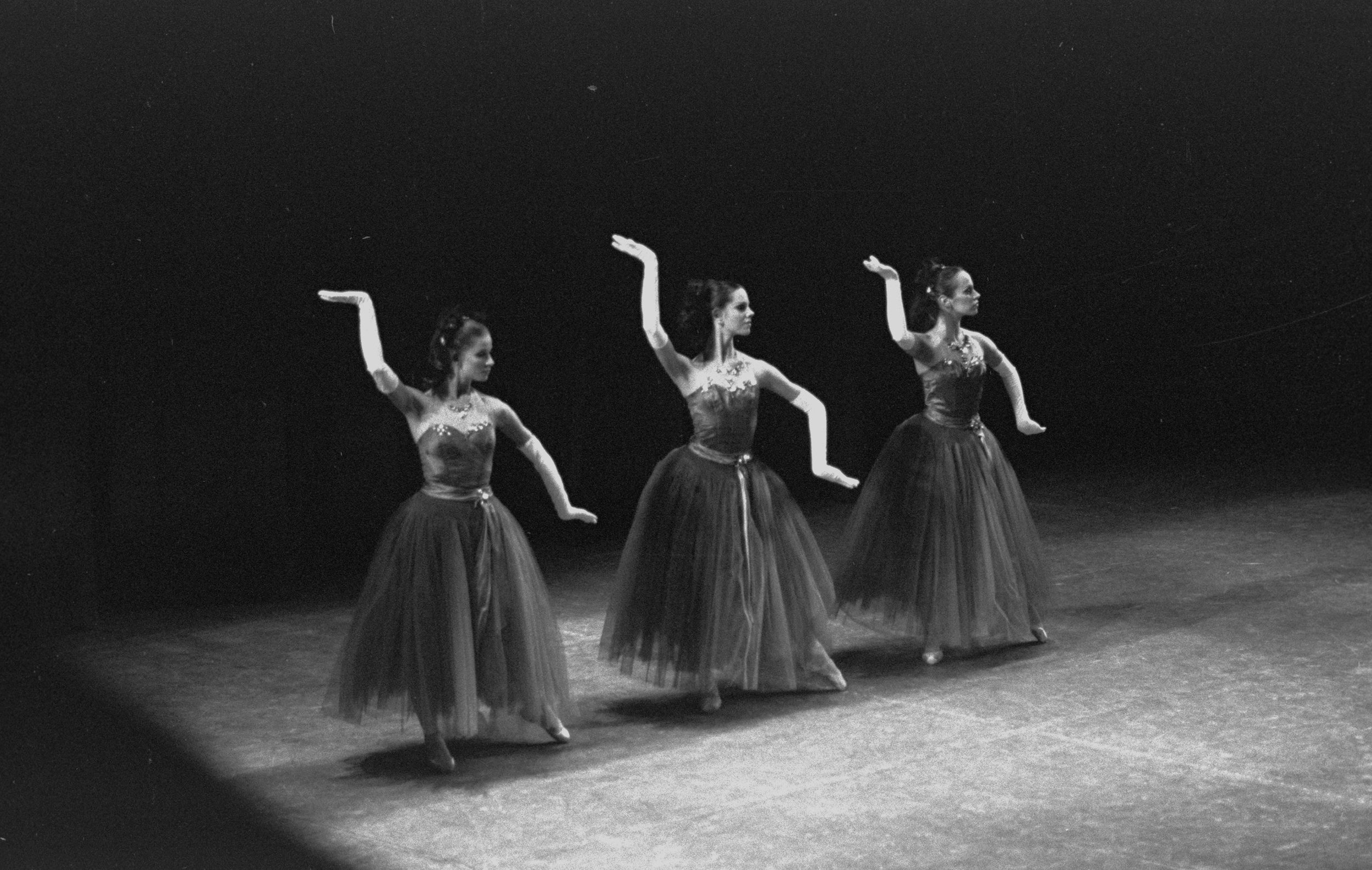Halloween: New York’s School of American Ballet votes for the Spookiest Ballet
La Valse (George Balanchine), New York City Ballet (Renee Estopinal in the center). 1978. Photo by Martha Swope © Billy Rose Theatre Division, The New York Public Library of the Performing Arts.
While kids all over the US – and the world – were planning their costumes for trick-or-treating, advanced division students at the School of American Ballet were planning their costumes for the annual Halloween Open House for supporters of the school. Enjoy a taster from the 2021 Halloween Open House:
The School of American Ballet also asked its staff: what is the spookiest ballet? Favourites included Giselle (TWoA’s autumn ballet), La Sylphide, The Firebird and Spectral Evidence, a creepy ballet by French contemporary choreographer Angelin Preljocaj inspired by the Salem witch trials. But the clear winner was George Balanchine’s 1951 Ballet La Valse. The French composer Maurice Ravel originally wrote La Valse in 1920, still shaken by his experiences as a lorry driver transporting munitions under heavy German fire during the First World War (1914-1918). Ravel wrote in his composition notes: “We are dancing on the edge of a volcano.” When George Balanchine choreographed the ballet in 1951, he added Ravel’s Valses Nobles et Sentimentales to the ballet score.
The one-act ballet certainly has a gothic vibe. All seems well in the beginning: sporting high ponytails and gorgeous ball gowns designed by Karinska, Balanchine’s favourite costume designer, the women look like models wearing the highly fashionable New Look so popular in the early 1950s (cinched waists, full skirts, and long, white gloves).
But before long, a woman in a white ballgown appears. She dances with a man, but as the ball continues, a deep sense of foreboding can be heard in the music. A figure in black mysteriously appears: the woman in white is terrified but also fascinated by the stranger, who flings her around in a wild dance. The ballet reaches its climax: the stranger presents the woman a black necklace, he holds up a mirror, the mirror is cracked, she is terrified, but it is already too late – she is under his spell. He offers her a pair of long, black gloves, she slides her hands into the gloves as the music reaches a booming crescendo, she puts a black gown on top of her white dress, he kisses her hand, they waltz around the ballroom, but as they turn faster and faster, she becomes lifeless in his arms – she has danced with Death.
Those who have seen a good performance of La Valse will never forget the moment when the woman in white slides her hands into the black gloves, but on stage, the iconic scene has its challenges for the leading ballerina. The School of American Ballet shared this vivid account by New York City Ballet principal dancer Sara Mearns:
